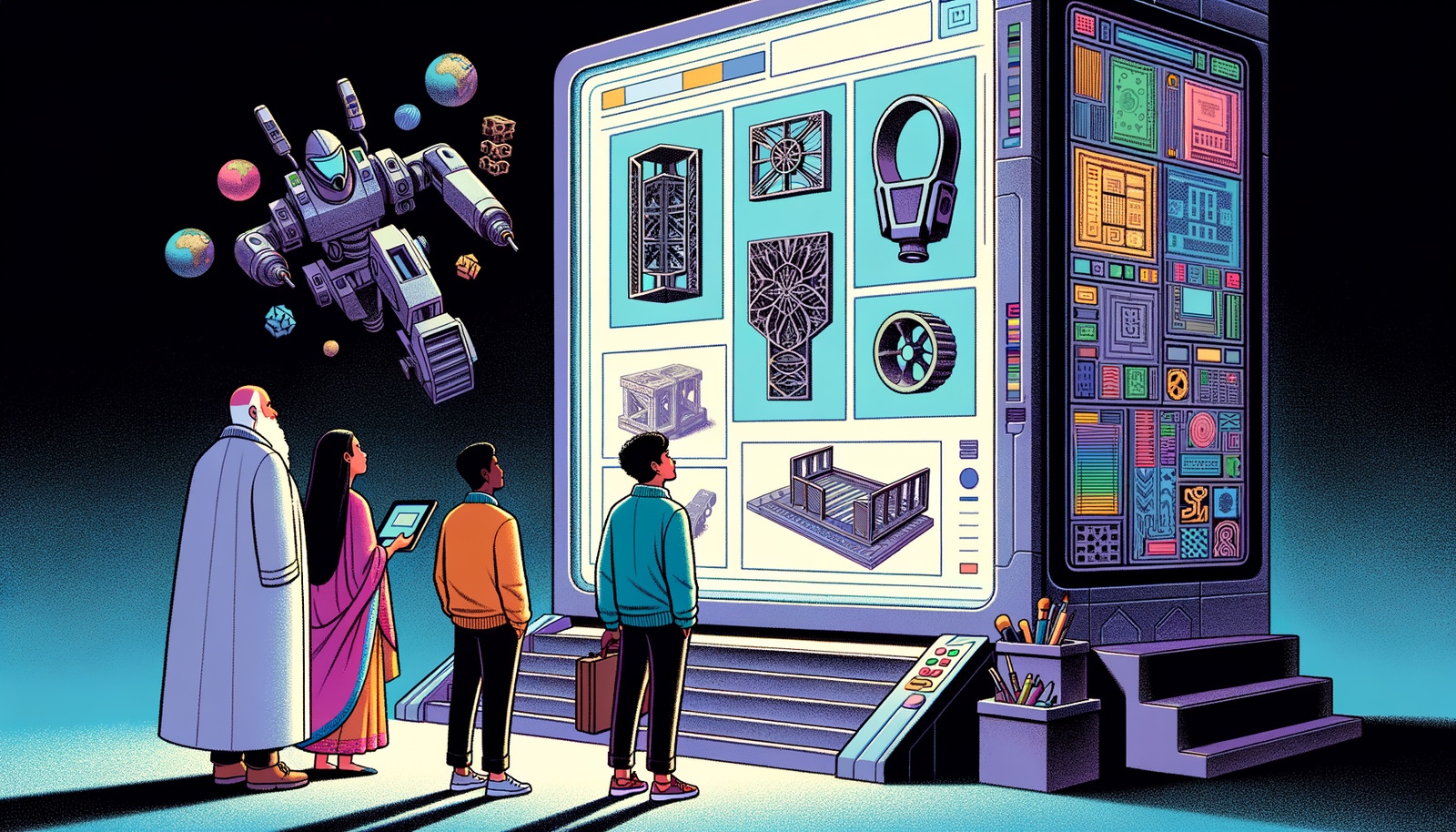Your Cart is Empty
Customer Testimonials
-
"Great customer service. The folks at Novedge were super helpful in navigating a somewhat complicated order including software upgrades and serial numbers in various stages of inactivity. They were friendly and helpful throughout the process.."
Ruben Ruckmark
"Quick & very helpful. We have been using Novedge for years and are very happy with their quick service when we need to make a purchase and excellent support resolving any issues."
Will Woodson
"Scott is the best. He reminds me about subscriptions dates, guides me in the correct direction for updates. He always responds promptly to me. He is literally the reason I continue to work with Novedge and will do so in the future."
Edward Mchugh
"Calvin Lok is “the man”. After my purchase of Sketchup 2021, he called me and provided step-by-step instructions to ease me through difficulties I was having with the setup of my new software."
Mike Borzage
Design Software History: The Evolution of DesignSpark Mechanical: Democratizing 3D CAD for Engineers and Hobbyists
August 15, 2024 3 min read


Introduction to DesignSpark Mechanical
Origins and Background
DesignSpark Mechanical was launched in 2013 by RS Components, a leading distributor of electronic, electrical, and industrial components. The software was developed in collaboration with SpaceClaim, leveraging their expertise in Direct Modeling technology. The primary goal of DesignSpark Mechanical was to provide engineers, hobbyists, and small businesses with a powerful yet user-friendly 3D CAD tool that could facilitate rapid prototyping and iterative design processes.
Company Behind the Software
RS Components, headquartered in Corby, United Kingdom, has a long history of supporting engineers and innovators with a wide range of products and services. Their collaboration with SpaceClaim was instrumental in bringing DesignSpark Mechanical to life. SpaceClaim, known for its intuitive Direct Modeling approach, provided the core technology that made DesignSpark Mechanical both accessible and powerful.
Core Features and Technological Innovations
Direct Modeling Approach
One of the standout features of DesignSpark Mechanical is its use of Direct Modeling, which represents a significant departure from traditional parametric modeling. Direct Modeling allows users to interact with their designs in a more intuitive and flexible manner, enabling them to make changes on-the-fly without worrying about the underlying constraints and dependencies that are typical in parametric systems. This approach is particularly advantageous for rapid prototyping and iterative design, as it allows for quick adjustments and experimentation.
User-Friendly Interface
DesignSpark Mechanical was designed with usability in mind. Its interface is straightforward and intuitive, making it accessible to users who may not have extensive experience with complex CAD tools. Compared to other CAD software available at the time, DesignSpark Mechanical stood out for its simplicity and ease of use, which lowered the barrier to entry for many users.
Integration with Ecosystem
Another key feature of DesignSpark Mechanical is its integration with other RS Components tools and services. Users have access to a vast library of components and community resources, which can significantly speed up the design process. This integration ensures that users can easily find the parts they need and leverage the collective knowledge of the DesignSpark community.
Impact on Engineers and the Industry
Accessibility and Democratization of CAD
The introduction of DesignSpark Mechanical marked a significant step towards the democratization of CAD. By offering a powerful 3D CAD tool for free, RS Components opened up advanced design capabilities to a much broader audience. This move was particularly beneficial for hobbyists, small businesses, and educational institutions, who could now access professional-grade CAD software without the associated costs.
Industrial Adoption and Use Cases
DesignSpark Mechanical quickly gained traction in various industries. Companies and professionals across different sectors adopted the software for a wide range of applications. The flexibility and ease of use of Direct Modeling made it suitable for tasks ranging from product design and development to custom component manufacturing.
- Electronics: Engineers used DesignSpark Mechanical to design custom enclosures and mechanical parts for electronic devices.
- Automotive: The software was employed in the design of automotive components and accessories.
- Education: Educational institutions integrated DesignSpark Mechanical into their curricula to teach students the fundamentals of 3D CAD design.
Evolution and Future Directions
Software Updates and Enhancements
Since its launch, DesignSpark Mechanical has seen numerous updates and enhancements. These updates have introduced new features, improved performance, and expanded the software's capabilities. Some of the major updates include enhanced drawing and annotation tools, improved integration with other RS Components platforms, and expanded support for various file formats.
Future of DesignSpark Mechanical
Looking ahead, there are several exciting trends and advancements in CAD technology that could influence the future development of DesignSpark Mechanical. The increasing adoption of cloud-based solutions, advancements in artificial intelligence and machine learning, and the growing importance of collaborative design are all factors that could shape the next generation of CAD tools. RS Components and SpaceClaim are likely to continue building on the strong foundation they have established, further enhancing the capabilities and user experience of DesignSpark Mechanical.
Role in the CAD Landscape
DesignSpark Mechanical has carved out a unique niche in the CAD landscape. Positioned among both free and commercial CAD tools, it offers a compelling combination of accessibility, power, and ease of use. Its contribution to the ongoing evolution of CAD software is significant, as it has helped to lower the barriers to entry for advanced design and prototyping, enabling a wider range of users to bring their ideas to life.
Also in Design News

Cinema 4D Tip: Structured Content Browser Workflow for Cinema 4D Asset Management
January 07, 2026 2 min read
Read MoreSubscribe
Sign up to get the latest on sales, new releases and more …




